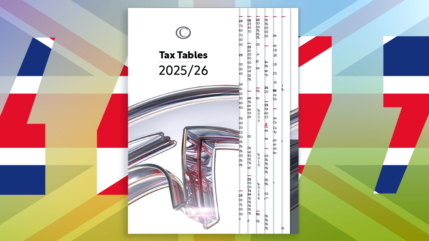Figures released by HM Revenue & Customs (HMRC) last week showed it received £1.5bn in Inheritance Tax receipts in just three months, between April and June 2021. That’s £400m more than the same period in 2020, a 36.36% increase.
For the whole of 2021/22, the Office for Budget Responsibility (OBR) estimates that Inheritance Tax (IHT) will generate £6.0bn compared with £5.1bn in 2019/20, rising to £6.6bn in 2025/26.
According to the OBR, the main determinants of IHT receipts, which fluctuate according to the value of people’s estates are;
- Average house prices
- Equity prices
- Household deposit balances
Taking each of these in turn, it’s no surprise that the government’s IHT take is on this upwards trajectory.
Average House Prices
According to Rightmove, the average asking price for homes coming onto the market between 13 June 2021 and 10 July 2021 was a record £338,447.
Equity Prices
Over the past 12 months equity markets have performed strongly. As of 23 July the FTSE100 had risen by 14.48%, while other Indexes such as the FTSE 250, and the S&P 500 have risen even more.
Household deposit balances
The OBR states that the lockdown and the curtailment of social and retail consumption, coupled with extensive income support, means that households are expected to have accumulated an additional £180bn in savings by the middle of this year.
A ready reckoner used by the OBR for its March 2019 forecast suggests that a 1% rise in equity prices equates to a rise in the IHT take of ‘less than £30m’, while a 1% rise in residential house prices increases revenue from IHT by ‘less than £60m’.
Other factors behind the rising IHT take are the freezing of nil rate band (NRB) and the residence nil rate band (RNRB) until April 2026. The nil rate band, which is currently £325,000 is the figure below which you pay no IHT.
The residence nil rate band (RNRB) is available when residential property is left to direct descendants and currently stands at £175,000. It can be added to the nil rate band, although it comes with qualifying conditions. In addition, there is taper for estates worth more than £2m, which gradually reduces the RNRB.
According to March 2021 Budget documents, the freezing of the NRB at £325,000, the RNRB (£175,000) and the starting point for its taper (£2 million) is forecast to raise £15m in 2021/22, rising to a whopping £445m by 2025/26.
Given that the tax take from IHT is on the rise, and expected to go on increasing for the foreseeable future, it is more important than ever to consider tax planning to mitigate the effects.
Some ways to reduce your IHT bill
- Gift to individuals or utilise trusts. We recently wrote about trusts. Read more here.
- Gifting to charities.
- Making your will tax efficient.
- Make sure you nominate beneficiaries to receive your pension should you pass away. Pensions are normally considered outside of the estate for IHT purposes.
- Take advantage of a little-known exemption; the ‘downsizing addition’. Assuming certain qualifying conditions are met, this allows the estate of someone who has sold, given away or downsized to a less valuable home before they die to get the RNRB.
This is just a brief summary of how effective tax planning can help reduce your IHT bill. Everyone’s circumstances are different and you personally may benefit from detailed tax planning and financial advice.
To learn more, please speak to your Courtiers Adviser or contact us.
Inheritance Tax – Key Points
- Inheritance tax (IHT) is levied on the value of a person’s estate at the time of their death. The tax is charged at 40% above the nil-rate band (NRB), currently £325,000 and frozen at that figure until April 2026.
- Another allowance, the residence nil rate band (RNRB) set at £175,000 until April 2026, is available when residential property is left to direct descendants. This can be added to the NRB.
- Spouses and civil partners can share the above unused allowances.
- Transfers made out of a person’s estate within seven years of their death are included when calculating the value of a person’s estate for IHT purposes.













